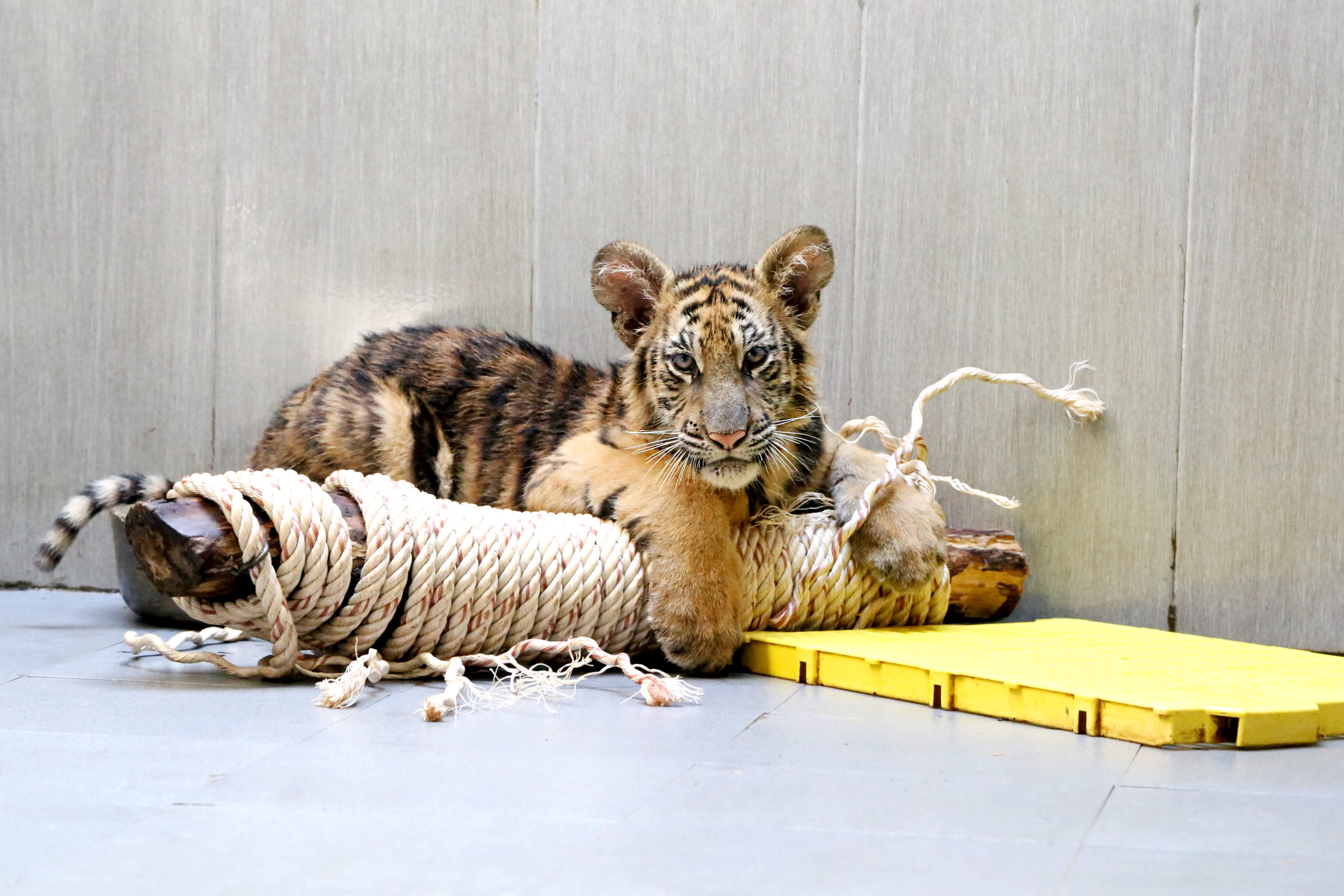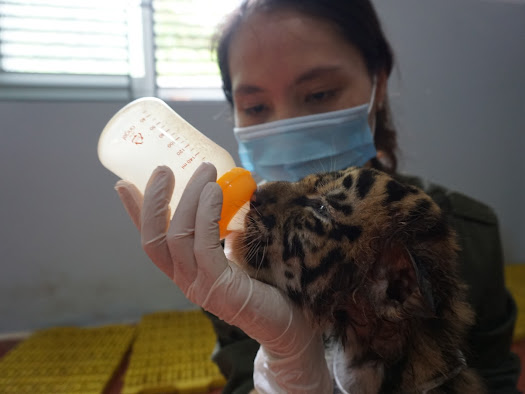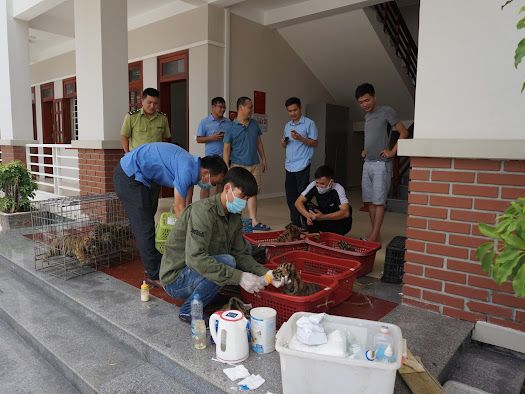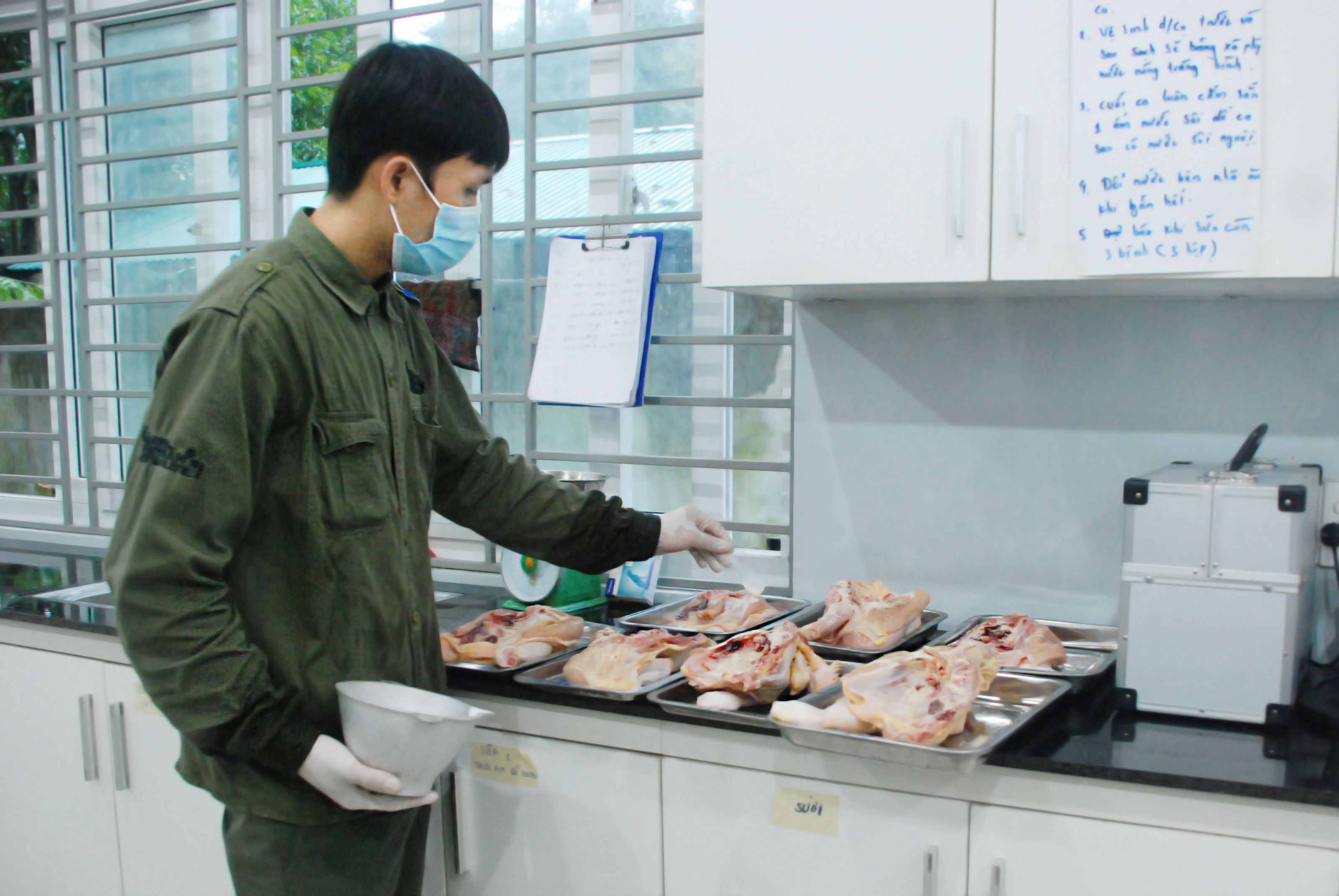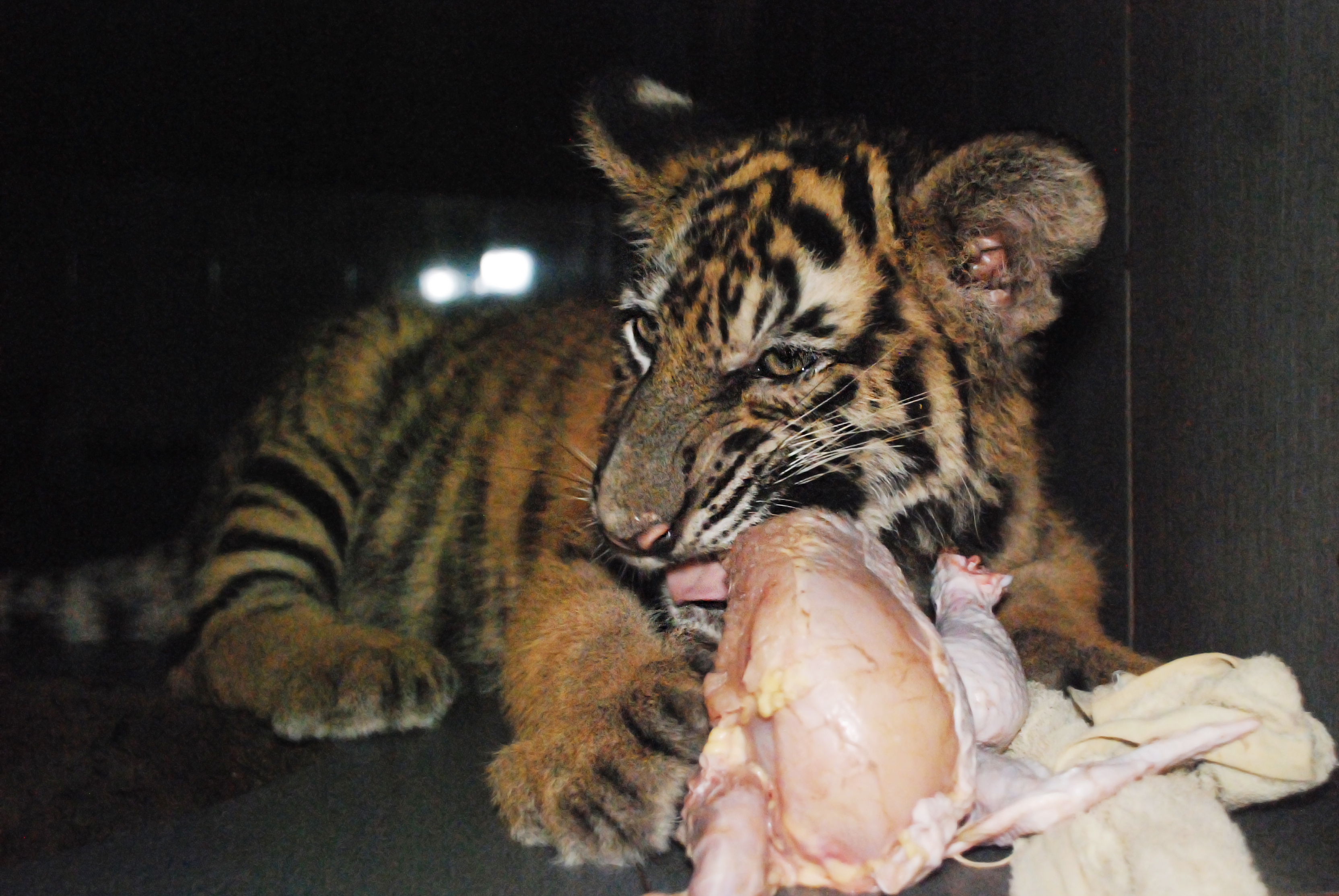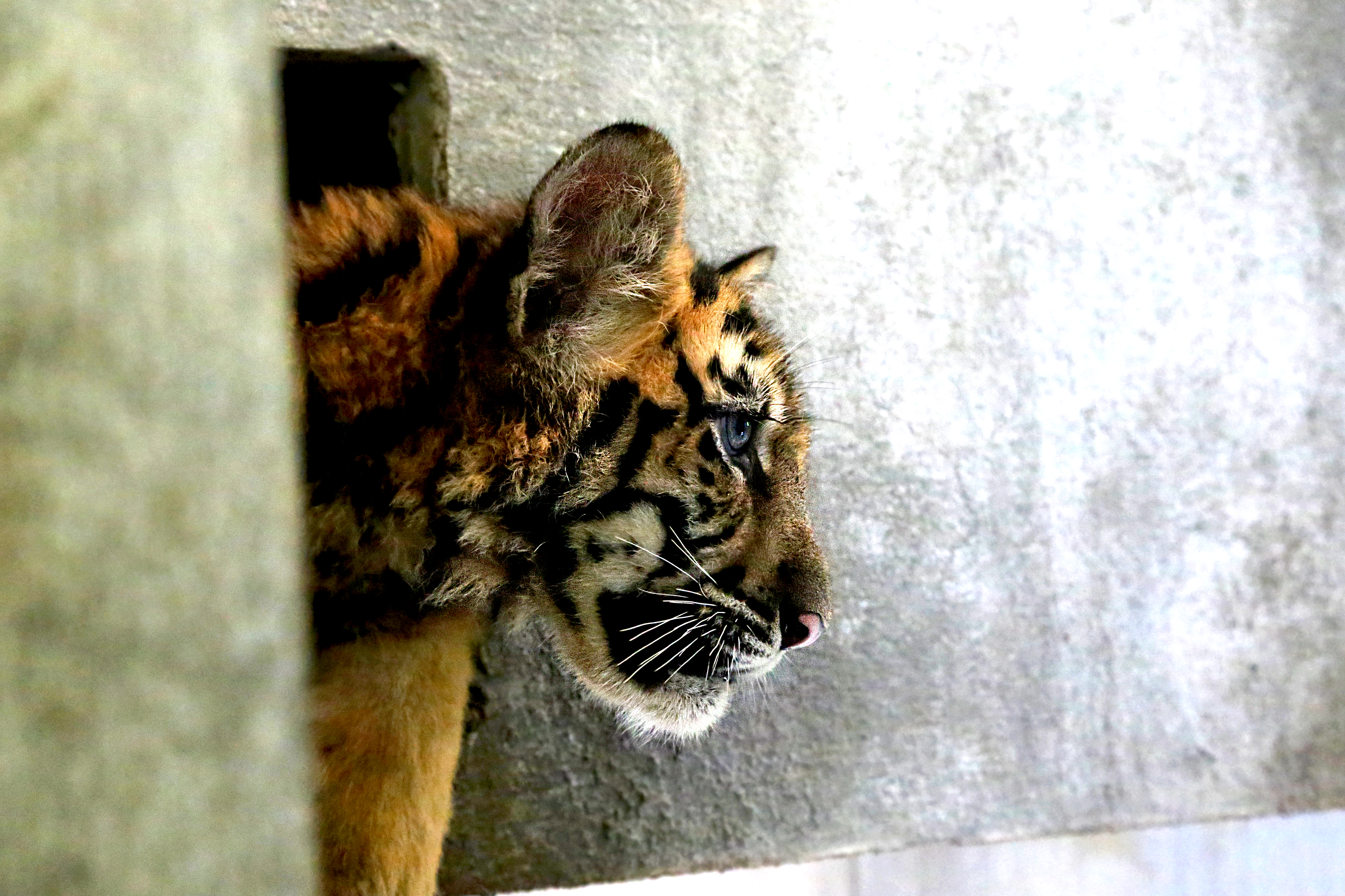The animals were rescued in August by environmental police officers in the north-central province of Nghe An.
Prior to their rescue, the tigers had been held in cages and would have likely been sold and slaughtered for bone paste and other tiger-derived products.
Much of Vietnam’s illegal tiger trade is fueled by beliefs that tiger meat, bones, and skin can cure bone and joint illnesses in humans.
The tigers are currently in the care of Save Vietnam’s Wildlife (SVW), an animal rescue center at Pu Mat National Park in Nghe An.
|
|
| A tiger cub feeds on milk at the rescue center in Pu Mat National Park in Nghe An Province, Vietnam. Photo: SVW / Le Ngan |
Gentle fathers
Amongst the tiger cubs are two males and five females, each of which weighed a mere 2.9 to 4.5 kilograms when they were found last year, Dang Thanh Tuan, leader of the SVW, said, adding they now range from 13 to 16 kilograms each.
Tuan also explained that the tigers were very weak when they were first rescued, forcing SVW members to spend significant time feeding them milk from nursing bottles and closely monitoring their conditions.
Aside from Tuan, two other members of the SVW – Dung and Trieu – have been caring for the seven tigers from the beginning, treating them as if they were their own children.
The first month was a serious challenge, Tuan recalled, adding that they had to feed the cubs with a special type of milk made specifically for felines.
Tuan decided to sleep at the rescue center during this period because the cubs needed to be fed every four hours.
|
|
| Rescuers check the condition of the tiger cubs in Nghe An Province, Vietnam. Photo: SVW / Le Ngan |
He and the other ‘fathers’ also had to prepare the milk and wash the bottles afterward, as well as pay close attention to each animal’s behavior and be on the watch for any signs of sickness.
In the second month, the caretakers began mixing cooked meat with milk to help the tigers get used to eating.
During the third month, the tigers began consuming fresh meat, with their favorites being chicken, rabbit, and beef, as well as soft bones.
Each tiger is now kept in a separate area where human contact is kept to a minimum, according to Tuan.
“We don’t treat them as pets, name them, or cuddle them as these actions can prevent them from acquiring their natural habits,” he explained.
“However, it is unlikely that these tigers will ever be able to live in their natural habitat.”
|
|
| A man prepares meat for the rescued tigers at Pu Mat National Park in Nghe An Province, Vietnam. Photo: SVW / Le Ngan |
Ambassadors
As the tigers continue to grow bigger, Pu Mat National Park will not be able to provide shelter to all of them, according to Tran Xuan Cuong, the park’s director.
Cuong said he has been looking for new places capable of caring for rescued tigers.
If the COVID-19 pandemic subsides in the near future, the Wildlife Conservation Society (WCS) will coordinate with the World Wildlife Fund (WWF) to conduct genetic mapping on the tigers.
Pu Mat National Park has requested that Nghe An authorities draw up a long-term plan for wildlife rescue, including expanding the park’s rescue center and turning it into a biodiversity conservation facility.
|
|
| A rescued tiger is fed chicken at Pu Mat National Park in Nghe An Province, Vietnam. Photo: SVW / Le Ngan |
Cuong believes that this proposal will be approved, but funding will likely remain a challenge.
These tigers are now considered ambassadors for wildlife conservation and the fight against unlawful wildlife trade in Vietnam, he continued.
Many people disregard the law and hunt down tigers for their parts, lock them in small cages, and even force them to inbreed to maximize the number of offspring.
“Everyone must understand that just like humans, wild animals have the right to live and it is important that they get to live in their natural habitats,” Cuong stressed.
“Earth is home to all species, and all species must live to ensure a balanced ecosystem.”
|
|
| A tiger cub at the rescue center in Pu Mat National Park in Nghe An Province, Vietnam. Photo: SVW / Le Ngan |
About 7,000 to 8,000 tigers are kept in captivity across East Asia and Southeast Asia, nearly double the number of tigers in the wild, according to the WWF.
It is impossible to release captive tigers back to the wild as they either do not have or have lost their hunting and survival skills.
Tigers that are inbred can suffer birth defects and health issues, making them unsuitable for introduction into the wild.
Like us on Facebook or follow us on Twitter to get the latest news about Vietnam!

